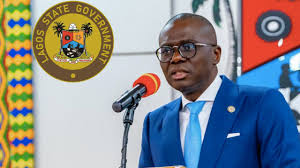Senegal Unveils $10 Billion Recovery Plan to Tackle Hidden Debt Crisis and Rebuild Investor Confidence

Senegal is taking bold steps to stabilize its economy and reassure global investors, launching a sweeping fiscal reform package aimed at raising $9.9 billion over the next three years. The move follows the discovery of $7 billion in hidden debt left behind by the previous administration—an alarming revelation that triggered an International Monetary Fund (IMF) loan freeze and investor anxiety.
Unveiled by Prime Minister Ousmane Sonko in Dakar, the new Economic Recovery Plan pledges to reduce debt dependency, cut wasteful public spending, and increase domestic revenues through new taxes and subsidy reforms. The plan is intended to fund 90% of its cost with internal resources—a significant break from past reliance on foreign borrowing.
A New Fiscal Reality: Taxes, Subsidies, and Streamlining
To meet its revenue goals, the government will:
- Introduce new taxes on goods, services, and mobile money transfers
- Raise tobacco taxes from 70% to 100%
- Scrap tax exemptions in under-taxed sectors such as online gaming and the digital economy
- Introduce visa fees for non-African travelers and African nationals from countries requiring visas for Senegalese citizens—projected to generate nearly $100 million
Senegal will also begin merging and downsizing state institutions, a move expected to save an additional $81 million, and gradually phase out energy subsidies, which the IMF says disproportionately benefit wealthier households.
“We’re restructuring the state to live within our means,” said Sonko. “This is about sovereignty through self-sufficiency—not austerity.”
Redefining Debt and Energy Deals
The recovery plan also targets significant savings and revenue through contract renegotiations and better asset utilization. The government expects:
- $1.4 billion in gains from restructured oil and mining contracts
- $319 million from telecom license renewals
- Additional resources by recycling public assets and issuing local-currency debt
Foreign-currency borrowing will be restricted to sectors with strong return potential such as oil, gas, hydrocarbons, and mining.
The IMF has long urged Senegal to rein in costly energy subsidies, which in March were estimated at up to 4% of GDP. IMF mission chief Edward Gemayel warned that “most of these subsidies benefit the wealthiest households,” and recommended a shift to cash transfers for vulnerable families instead.
Targeting a 3% Budget Deficit by 2027
With a current budget deficit of 12% of GDP, the government is aiming to shrink that figure to 3% by 2027, bringing its fiscal posture in line with global expectations and regional convergence standards.
The urgency of reform became clear after President Bassirou Diomaye Faye’s administration uncovered the previously undisclosed liabilities shortly after taking office. The revelation undermined the country’s credit credibility and suspended IMF funding talks—now set to resume next month.
“We have identified over $8.1 billion in available resources between 2025 and 2028, without raising the national debt,” Sonko said.
Reforms with a Human Face
Despite the sweeping nature of the reforms, Sonko emphasized the importance of social equity. Targeted subsidies and social programs will remain, he said, but with a renewed focus on directing aid to the most vulnerable.
The government will also take steps to attract investment by streamlining land ownership procedures and raising the age limit for imported vehicles, responding to key demands from Senegal’s diaspora.
A Critical Moment for Senegal
As a new oil and gas producer, Senegal finds itself at a crossroads: the promise of resource wealth must now be balanced against the burden of inherited debt and public expectations.
Whether the recovery plan succeeds will depend not only on fiscal discipline but also on public trust. With IMF negotiations resuming and tough reforms ahead, clear communication and inclusive execution will be essential.




